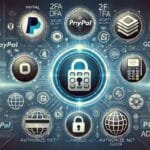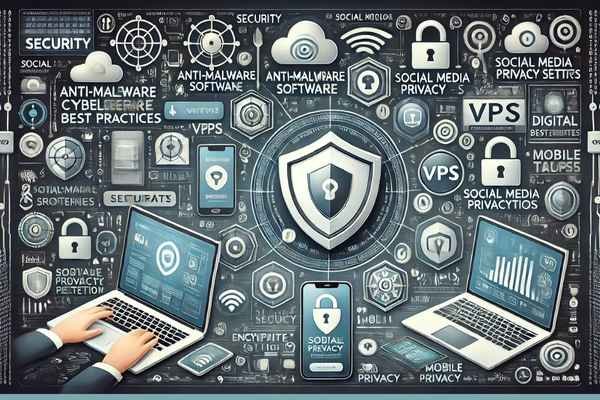
Is Identity Theft Insurance Worth It? Pros, Cons, and Top Providers
November 13, 2024
Comparing Payment Gateway Security for Safer Transactions
November 13, 202410 Practical Tips to Prevent Financial Fraud and Identity Theft:
In today’s digital landscape, financial fraud and identity theft are critical issues that can affect anyone, especially digital marketing professionals, developers, and content creators who manage sensitive data and finances online. As fraudsters develop new techniques, it’s essential to stay vigilant and implement effective strategies to protect personal and professional information. Here, we explore 10 practical, actionable tips to help prevent financial fraud and identity theft, with insights and tools tailored for digital professionals.
Table of Contents
1. Use Strong and Unique Passwords for Every Account
A strong password is the first line of defense against unauthorized access. Using the same password across multiple sites increases the risk, as a single data breach can expose all accounts that use that password.
Best Practices for Creating Strong Passwords
- Use a combination of uppercase and lowercase letters, numbers, and special characters.
- Avoid using easily guessed information, like birthdays or names.
- Change passwords every three to six months to reduce vulnerability.
Recommended Tool: Password Managers
Using a password manager like LastPass or 1Password [Affiliate Link] simplifies the process of creating and storing complex passwords. These tools generate strong passwords and store them securely, so you don’t have to remember each one.
2. Enable Two-Factor Authentication (2FA)
Two-factor authentication (2FA) adds an additional layer of security, requiring a second form of verification, usually a code sent to your phone, to log in. This extra step makes it much harder for hackers to gain access, even if they know your password.
Why 2FA is Essential
2FA protects accounts from unauthorized access by requiring not just something you know (your password) but something you have (like your phone). This extra layer can make a huge difference in keeping your accounts secure.
Recommended 2FA Apps
Popular 2FA apps include Authy and Google Authenticator [Affiliate Link]. Both offer secure, easy-to-use two-factor authentication, compatible with most major services.
3. Be Cautious with Phishing Emails
Phishing remains one of the most common tactics for financial fraud and identity theft. These emails often appear to be from legitimate sources but are designed to trick you into sharing sensitive information, like passwords or credit card details.
How to Spot Phishing Emails
- Look for misspellings, grammar errors, and unusual sender addresses.
- Be wary of urgent messages that pressure you to click on links or download attachments.
- Avoid clicking on suspicious links; instead, visit websites directly by typing the URL.
Security Tools for Email Protection
Using services like SpamTitan or Proofpoint [Affiliate Link] can filter out phishing emails, reducing the risk of falling for these scams.
4. Monitor Your Financial Statements Regularly
Regularly checking your bank and credit card statements is essential for spotting any unusual or unauthorized transactions early. Many people overlook small, unusual charges that may indicate fraud.
Tips for Effective Monitoring
- Set up alerts for large or unusual transactions.
- Check statements weekly or at least once a month.
- Contact your bank immediately if you spot any suspicious charges.
Recommended Apps for Financial Monitoring
Apps like Mint and Personal Capital [Affiliate Link] can help you monitor your finances by providing consolidated views of your accounts and sending alerts for any unusual activity.
5. Use a Secure Payment Method for Online Transactions
For online purchases, using secure payment methods such as PayPal or virtual credit cards can protect your main account details. Virtual cards generate one-time-use numbers for online shopping, reducing the risk of exposure.
Benefits of Virtual Credit Cards and PayPal
- Virtual credit cards limit exposure by using unique numbers for each transaction.
- PayPal and similar services act as intermediaries, so your bank details aren’t shared directly with merchants.
Recommended Service: Privacy.com
Privacy.com [Affiliate Link] provides virtual credit card services that make it easy to create secure, one-time-use payment methods for online transactions.
6. Install Anti-Malware Software
Malware can be used to steal sensitive information like login credentials and banking details. Anti-malware software helps detect and prevent malware from infiltrating your devices.
Best Anti-Malware Tools
Install reputable anti-malware programs, such as Malwarebytes or Norton Antivirus [Affiliate Link], to scan your system regularly and alert you to potential threats.
Additional Tips
- Keep your anti-malware software updated to ensure it can detect the latest threats.
- Run regular scans, especially if you download files or visit unfamiliar websites often.
7. Limit the Personal Information You Share on Social Media
Oversharing on social media can inadvertently provide hackers with information that makes it easier for them to target you. Details like your birthday, pet’s name, or location could be clues to security questions or even passwords.
Steps to Secure Your Social Media Presence
- Review your privacy settings to control who can see your posts.
- Avoid sharing sensitive information like addresses, phone numbers, or travel plans.
- Be cautious of connecting with unknown individuals who might be phishing for details.
8. Use a Virtual Private Network (VPN) on Public Wi-Fi
Public Wi-Fi networks are often unsecured, making it easier for hackers to intercept your data. Using a VPN protects your internet connection by encrypting your data and hiding your IP address.
Benefits of Using a VPN
- Prevents data interception on unsecured networks.
- Hides your online activity, providing extra security when working remotely or traveling.
Recommended VPN Services
Top VPNs like ExpressVPN or NordVPN [Affiliate Link] offer strong encryption and user-friendly apps, making it simple to secure your connection anywhere.
9. Keep Software and Devices Updated
Software updates frequently contain security patches for vulnerabilities that hackers can exploit. Regularly updating your devices and applications minimizes these security risks.
Key Areas to Keep Updated
- Operating systems (e.g., Windows, macOS)
- Browsers (e.g., Chrome, Firefox)
- Plugins and extensions, especially those related to security
Recommended Practices for Updates
Enable automatic updates where possible and manually check for updates on a monthly basis. For added security, keep a list of the devices and software you use to ensure nothing is overlooked.
10. Secure Your Mobile Device
Since many people conduct financial transactions on mobile devices, securing these devices is as important as securing your computer. Mobile devices are prime targets for hackers, especially if left unprotected.
Steps to Protect Your Mobile Device
- Use a strong passcode or biometric authentication.
- Enable “Find My Device” in case it’s lost or stolen.
- Avoid downloading apps from unverified sources, as they may contain malware.
Recommended Tools for Mobile Security
Apps like Lookout and McAfee Mobile Security [Affiliate Link] provide additional layers of security for mobile devices, including malware scanning and anti-theft features.
10 Practical Tips to Prevent Financial Fraud and Identity Theft Recap
10 Tips to Prevent Financial Fraud and Identity Theft
| Tip | Description | Recommended Tools |
|---|---|---|
| Use Strong Passwords | Use unique, complex passwords for each account and update them regularly to reduce the risk of breaches. | LastPass, 1Password |
| Enable Two-Factor Authentication (2FA) | Add an extra layer of security with 2FA, requiring a second form of verification to log in. | Authy, Google Authenticator |
| Be Cautious with Phishing Emails | Learn to recognize phishing attempts and avoid clicking on suspicious links or sharing sensitive information. | SpamTitan, Proofpoint |
| Monitor Financial Statements | Regularly check your statements for unauthorized transactions and set up alerts for unusual activity. | Mint, Personal Capital |
| Use Secure Payment Methods | Use virtual credit cards or services like PayPal to keep your main account details safe. | Privacy.com, PayPal |
| Install Anti-Malware Software | Protect your devices with anti-malware programs that scan for threats and block malicious activity. | Malwarebytes, Norton Antivirus |
| Limit Personal Information on Social Media | Control what you share online to reduce the risk of hackers exploiting your personal details. | Adjust privacy settings on social media platforms. |
| Use a VPN on Public Wi-Fi | Encrypt your internet connection with a VPN to protect data when using public networks. | ExpressVPN, NordVPN |
| Keep Software Updated | Regularly update your devices and software to patch vulnerabilities that hackers might exploit. | Enable automatic updates on devices and applications. |
| Secure Your Mobile Devices | Use strong passcodes, enable anti-theft features, and avoid downloading unverified apps. | Lookout, McAfee Mobile Security |
Frequently Asked Questions
What are the most common signs of identity theft?
The most common signs of identity theft include unfamiliar transactions on your financial statements, notifications of new accounts you didn’t open, and unexplained declines of your credit card. Receiving bills or debt collections for accounts you don’t recognize is also a red flag.
How can I protect myself from phishing scams?
To protect yourself from phishing, be cautious of unexpected emails or messages that ask for personal information. Avoid clicking on links in suspicious emails and verify the sender’s email address. If in doubt, contact the company directly using a trusted source rather than responding to the email.
Is it safe to store passwords in my browser?
While convenient, storing passwords in your browser can pose a security risk if your device is compromised. Using a dedicated password manager with encryption is a safer option, as it offers stronger protection for your stored passwords.
Conclusion
Preventing financial fraud and identity theft requires vigilance and proactive security practices. Digital marketing professionals, developers, and content creators face unique challenges due to the nature of their work, which often involves handling sensitive information online. By implementing these practical tips—from using strong passwords and enabling two-factor authentication to regularly monitoring financial statements and using VPNs on public Wi-Fi—you can significantly reduce the risk of becoming a victim of fraud. Investing in secure tools and adopting safer online habits will protect not only your financial well-being but also your professional reputation in today’s increasingly digital world.








